|
| 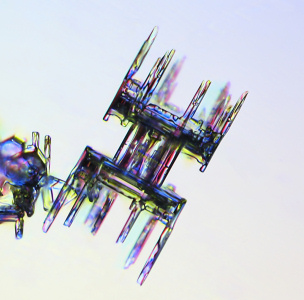
Occasionally
you can find some truly odd snow crystals falling from the clouds, such
as the one at left. It appeared on an otherwise unremarkable day in
Fairbanks, Alaska. It was January, and it was warm, with temperatures
just below freezing, and most of the falling crystals were misshapen
granular crystals (as described in the Guide to Snowflakes) -- nothing unusual there.
Then,
without any other indication of change, these weird constructions
started falling. And there were a lot of them for maybe ten minutes.
After that, the snowfall went back to misshapen granular crystals.
Strange.
Here are a few more pictures from that remarkable ten minute period. They look a bit like ice bugs. |
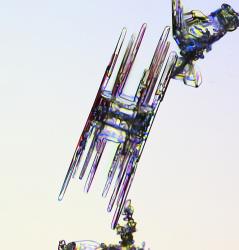  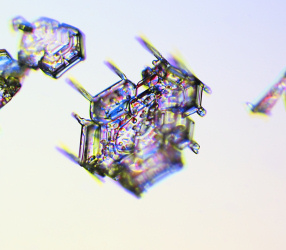 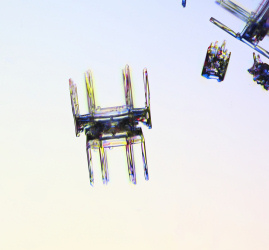 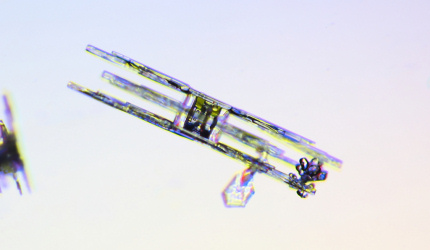 |
| 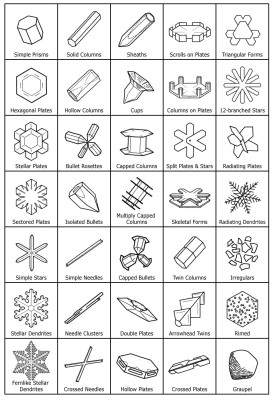 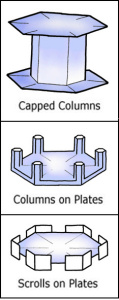 Explaining the Weirdness Explaining the Weirdness
So what is going on here? How could these bizarre things be created in the clouds? The answer can be found in the Types of Snowflakes chart at right (described further at the Guide to Snowflakes).
The crystals above are some complex mix of Capped Columns, Columns of Plates, Scrolls on Plates, and these forms arise because plates and columns grow at different temperatures (see the Morphology Diagram; somehow it always comes back to the Morphology Diagram).
The
atmosphere probably had some particular layered structure for that
ten-minute period, with different temperatures in the different layers.
As the crystals fell, they fell through these layers, changed their
growth accordingly, and so they grew into these odd shapes.
At other times, the wind may have mixed the layers up, so it was more like typical atmospheric conditions.
Such
is the science of snowflakes. Weird things happen because ice crystal
growth is so sensitive to temperature and humidity. The fun thing as
you can occasionally witness the weirdness just falling from the
clouds. You just have to notice when it happens. | | | |
|
|
|
